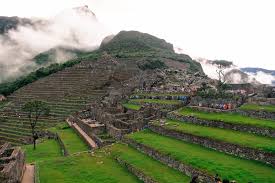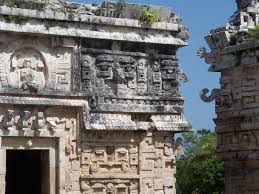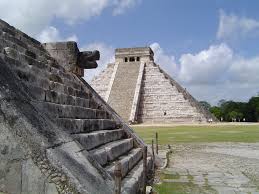It is believed the first humans reached Central America about 15,000 years ago. The first identifiable culture, Clovis, existed around 10,000 BC. Some stone tools dating back to 9,000 BC have been found in Guatemala. Around this time, the Fourth Ice Age was drawing to a close and the climate was gradually warming up enabling humans to begin eating more plants and less meat. This change was underway around 8,000 BC.
Ancient Mayan Topography of Region
The topography of the area greatly varied from volcanic mountains, which comprised the highlands in the South, to a porous limestone shelf, known as the Lowlands, in the central and northern regions. The southern portion of the Lowlands were covered by a rain forest with an average height of about 150 feet. Scattered savannas and swamps, or bajos, appeared sporadically, interrupting the dense forests.
The northern lowland of the Mayan region is hot, and the rainy season, from May through October, often brings insufficient rainfall. Permanent rivers and lakes are virtually nonexistent and only cenotes (large sinkholes filled with rainwater), provide precious water.
Southern Lowlands
The southern lowlands consist of rainforest and savannas where lakes and rivers are fed by the mighty Usumacinta river.February to May was the dry season characterized by air that was intensely hot and uncomfortable. At this time of year, the fields had recently been cut and had to be burned in accordance with their slash and burn form of agriculture.

The skies filled with a smoky grit, making the air even more unbearable until the rains came in late May to clear the murky atmosphere. The rainy season is between May and November, with peak rainfall in June and October.
Ancient Mayan Water Conditions
The timing of the droughts matched periodic downturns in the Maya culture, as demonstrated by abandonment of cities or diminished stone carving and buildings activity. Experts say the Maya were particularly susceptible to long droughts because about 95 percent of their population centers depended solely on lakes, ponds, and rivers containing on average an 18-month supply of water for drinking and agriculture.

The Pyramids were found in a mountainous region of South America where Chile is today. The land was fertile and a plateau type region at higher altitudes, it was hot and humid in the summer and cold in the winter. that region had a bad drought and this and disease was what was thought to have killed them off. There civilizations ruins are beautiful but incredibly inaccessible.

The Maya were skilled astronomers who constantly followed the movements of the sun and the moon. They predicted eclipses, explained the movements of planets, and devised a sophisticated calendar of the solar year.
|





